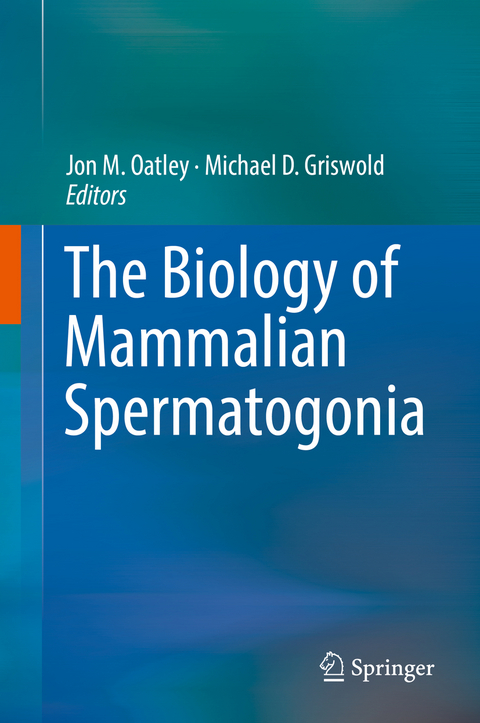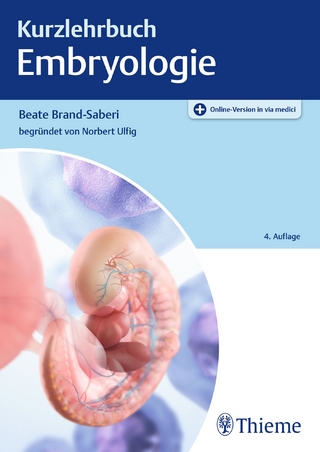
The Biology of Mammalian Spermatogonia
Springer-Verlag New York Inc.
978-1-4939-7503-7 (ISBN)
Looking to the future, the editors predict that the foundational information provided in this book -- combined with the advent of new tools and budding interests in use of non-rodent mammalian models -- will produce another major advance in knowledge regarding the biology of spermatogonia over the next decade. In particular, we anticipate that the core molecular machinery driving different spermatogonial states in most, if not all, mammals will be described fully, the extrinsic signals emanating from somatic support cell populations to influence spermatogonial functions will become fully known, and the capacity to derive long-term cultures of SSCs and transplant the population to regenerate spermatogenesis and fertility will become a reality for higher order mammals.
Jon M. Oatley, PhD, is Associate Professor and Director for the Center for Reproductive Biology, Washington State University. Michael D. Griswold, PhD, is Regents Professor of Molecular Biosciences, Washington State University.
PART 1: Spermatogenesis in Mammals.- Chapter 1: Organization of the Seminiferous Epithelium and the Cycle, and Morphometric Description of Spermatogonial Subtypes (Rodents and Primates).- PART 2: Postnatal Development of the Spermatogonial Population.- Chapter 2: Transition of Prenatal Prospermatogonia to Postnatal Spermatogonia.- Chapter 3: Setting the Stage: The First Round of Spermatogenesis.- PART 3: Spermatogonial Stem Cells.- Chapter 4: Defining the Phenotype and Function of Mammalian Spermatogonial Stem Cells.- Chapter 5: The Biology of Mammalian Spermatogonia: Regulation of Spermatogonial Stem Cell Maintenance and Self-renewal.- PART 4: Spermatogonial Differentiation.- Chapter 6: Role of Retinoic Acid Signaling in the Differentiation of Spermatogonia.- Chapter 7: Gonadotropin and Steroid Hormone Control of Spermatogonial Differentiation.- PART 5: Genome Integrity of Spermatogonia.- Chapter 8: Frequency of Human Disease Mutations and Spermatogonial Stem Cell Function.- Chapter 9: The Spermatogonial Stem Cell and the Environment.- Chapter 10: Testicular Germ Cell Tumors and Teratomas.- PART 6: Tools to Study Spermatogonial Biology.- Chapter 11: Transplantation and Culture of Spermatogonial Stem Cells.- Chapter 12: In Vitro Differentiation of Spermatogonia.- PART 7: Therapeutic Potentials and Applications of Spermatogonia.- Chapter 13: Fertility Preservation in Cancer Patients.- Chapter 14: Application of Spermatogonial Transplantation in Agricultural Animals.
“This book provides an excellent framework for understanding the biology of mammalian spermatogonia and spermatogonial stem cells. … A unique feature is the use of informative schematic diagrams accompanied by detailed legends. … This is an excellent resource, particularly for students, because it does a fine job of explaining each topic in detail. The authors are correct in stating that this book will be useful to laboratory investigators, both within and outside of the field.” (Prabhakara P. Reddi, Doody's Book Reviews, February, 2018)
| Erscheinungsdatum | 20.12.2017 |
|---|---|
| Zusatzinfo | 41 Illustrations, color; 3 Illustrations, black and white; XI, 387 p. 44 illus., 41 illus. in color. |
| Verlagsort | New York |
| Sprache | englisch |
| Maße | 155 x 235 mm |
| Themenwelt | Medizin / Pharmazie ► Medizinische Fachgebiete |
| Studium ► 1. Studienabschnitt (Vorklinik) ► Histologie / Embryologie | |
| Studium ► 1. Studienabschnitt (Vorklinik) ► Physiologie | |
| Naturwissenschaften ► Biologie ► Zellbiologie | |
| Naturwissenschaften ► Biologie ► Zoologie | |
| Schlagworte | fertility • mammals • Spermatogenesis • Spermatogonia • Spermatozoa • Stem Cells |
| ISBN-10 | 1-4939-7503-X / 149397503X |
| ISBN-13 | 978-1-4939-7503-7 / 9781493975037 |
| Zustand | Neuware |
| Informationen gemäß Produktsicherheitsverordnung (GPSR) | |
| Haben Sie eine Frage zum Produkt? |
aus dem Bereich


